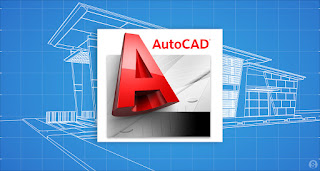AutoCAD, is standard design software commonly used by mechanical engineers, designers and architects for creating complex and highly illustrative 2D and 3D graphics. The aspirants who want to learn mechanical drawing or civil engineering design must enroll for autocad course in rawalpindi for the right skill-development exercise. Not only the students but the professionals also seeks timely guidance to polish their skills and upgrade their knowledge on the latest versions of AutoCAD.
There are various options available for learning AutoCAD. It is available in many colleges often as a part of degree programs in engineering or drafting technology. Technical schools also offer various CAD certificate programs. Some private organisations teach this as a standalone course, awarding program certifications on its successful completion. Many institutes that teach such courses are Autodesk-certified training centres. These courses are also available online.
There are four main sections of the autocad course in rawalpindi mechanical drawings course - Essentials, Advanced, Associate Preparation and Professional Preparation. Learning moves from basic tools and navigation to advanced 2D and 3D drawing, design and drafting. Each of the sections teaches the same modules with a few additions, albeit at a higher level than the previous section. For example, manipulation of objects is taught in all four sections, except that the topics covered under the concept become more complex from one section to the next one.
AutoCAD Civil 3D, 3D design software from Autodesk is specifically meant for civil engineers. It teaches the participants about different drawing techniques, navigation of user interface, profile geometries and their editing and labelling, site designing for layouts and pipe networking. The making of assemblies and corridors through the software and their working is also explained to autocad course in rawalpindi the aspirants by experienced trainers. Use of precision drafting tools is taught in great detail and candidates learn how to be comfortable with the same
By undergoing the training, aspirants will comfortably be able to explore the user interface of the software, whether 2D or 3D. With the help of fundamental features and precision tools, they will be able to roll out several technical drawings. Opportunities to work with layouts, dynamic blocks, tables and views will be presented before them. It might be possible that designers may already be aware of this, but they will get a chance to further improve on their skills in layer management. Configuration of plotter files and management of sheet sets will also be achieved by the students.
While finalizing the learning mode or partner, it is advisable to find what extra learning support materials you will get. Practicing through mock tests on the completion of each module is helpful in identifying the understanding of concepts. With the help of modern learning assessment tools and detailed analysis of the tests, can help in tracking the progress on a real-time basis and mapping git with industrial needs.

No comments:
Post a Comment
Note: Only a member of this blog may post a comment.